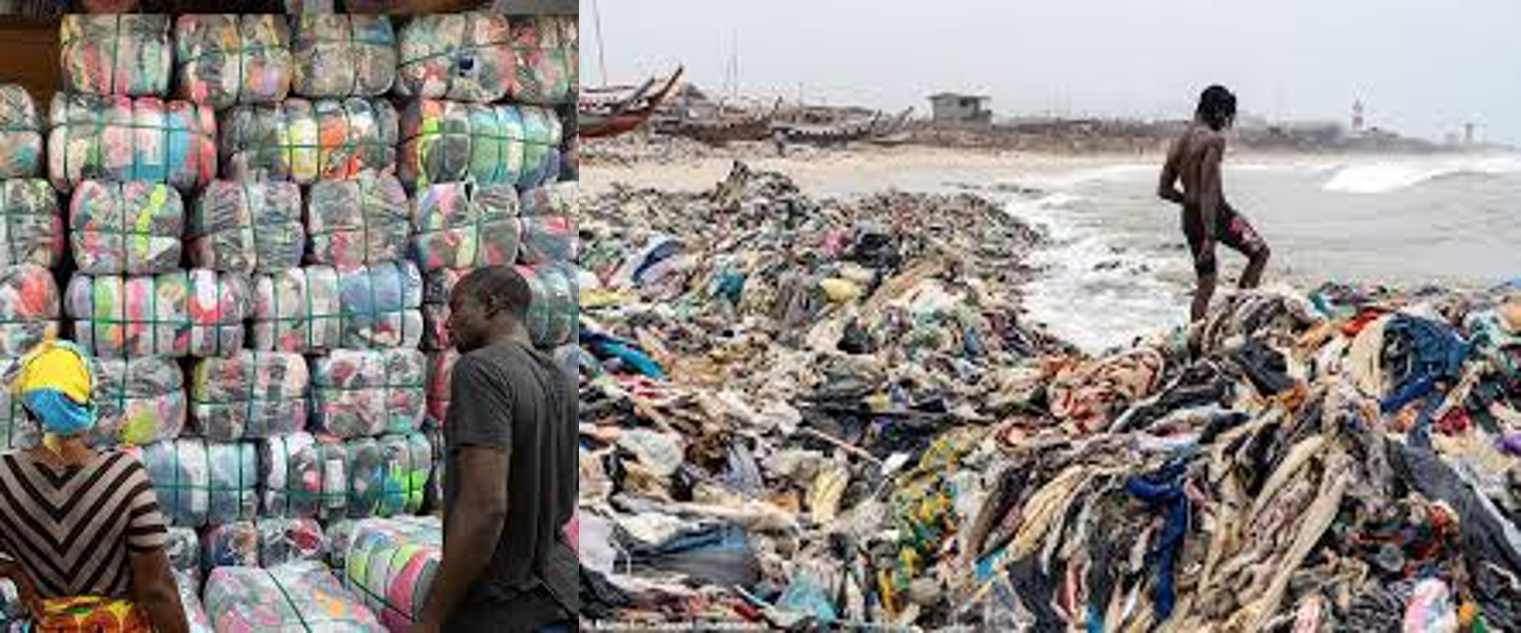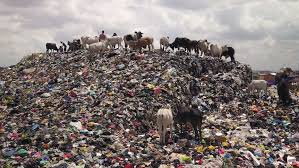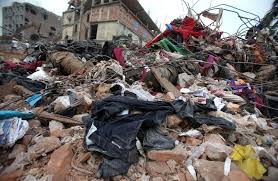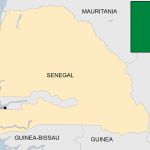
Fast Fashion’s Dumping Ground: How West Africa Is Drowning in Second-Hand Clothing Waste

Every week, massive shipping containers filled with used clothing arrive at West African ports, including Accra, Lagos, and Dakar. Market traders eagerly unpack them, hoping for garments they can resell. But buried beneath a few usable items are piles of damaged, stained, and unsellable clothes, the discarded leftovers of the global fast fashion industry.
What was once a thriving trade in second-hand clothing, known as okrika in Nigeria, obroni wawu in Ghana, and friperie in Senegal, has now evolved into a full-blown textile dumping crisis. West Africa is becoming the world’s fashion landfill, bearing the environmental and economic burden of overconsumption in the Global North.
From ‘Charity’ to Crisis
Initially framed as a way to help low-income communities access affordable clothing, second-hand clothing imports have spiralled into something else entirely.
In Ghana’s Kantamanto Market, up to 15 million garments arrive weekly, but 40–50 per cent are discarded almost immediately. Many are too worn, too dirty, or too poorly made to be resold. These unwearable garments end up clogging drains, polluting beaches, and piling up in illegal dumpsites across cities. The Korle Lagoon in Accra is now choked with textiles.
In Lagos, the influx of “okrika” (used clothing) fills entire markets, but traders increasingly report shipments arriving with clothes already damaged or unfit for use. The waste from these imports clogs drainage systems, contributes to flooding, and is routinely burned in the open, releasing toxic fumes.
In Senegal, bales of imported clothing, known locally as “friperie”, are unloaded in bulk at the Port of Dakar. While middlemen profit, communities living near waste sites complain of rising air and water pollution, as burned synthetic fabrics release microplastics and carcinogenic fumes into the environment.
Environmental Ruin, Human Cost
Much of today’s fast fashion is made from synthetic materials, such as polyester, nylon, and acrylic, which are forms of plastic that do not biodegrade. As a result, West Africa’s coastline and inland waterways are turning into plastic graveyards. In Ghana, “clothing beaches” have replaced dunes along the Korle Lagoon and the Odaw River. Waste experts warn that textile pollution is now a significant contributor to urban flooding and water contamination in cities like Accra and Lagos.


Public health consequences are dire. Open burning of synthetic waste is linked to respiratory illnesses, especially among children and market traders. In informal settlements like Old Fadama in Accra, the smell of melting polyester has become a permanent part of the air.
This is not charity. This is waste colonialism. We are not a dumping site for the fashion mistakes of the Global North.
Killing Local Industry
For decades, West Africa had its own thriving textile and garment sectors. Like Nigeria’s once-booming cotton industry and Senegal’s tailoring traditions, local fashion sustained millions of jobs. However, the rise of second-hand imports, sold at a fraction of local production costs, has crippled domestic manufacturers.
In Nigeria, textile factories in Kaduna, Kano, and Aba have shut down. Tailors and small-scale producers say they cannot compete with bales of nearly free clothing from Europe, the U.S., and China. In Ghana, local fabric printing companies have laid off workers as demand for their products declines.
When your entire wardrobe costs less than a single locally made shirt, what chance does local fashion have?
Jobs in Jeopardy, Yet Dependent Trade
Ironically, the second-hand clothing trade also supports thousands of informal jobs across West Africa, from port workers to resellers, repair tailors, and street hawkers. In Accra alone, Kantamanto employs over 30,000 people directly. In Lagos, entire markets, such as Tejuosho and Yaba, depend on okrika sales for their survival. This dual reality, economic dependency and environmental destruction, makes the issue
politically and morally complex.
Recycling and Resisting
Amid the crisis, a new wave of West African designers, artists, and activists is pushing back, using discarded clothes as raw material for art, fashion, and protest. In Ghana, designers from The Revival and Obroni Wawu October upcycle unsold garments into runway pieces. In Nigeria, brands like Dye Lab and This Is Us promote locally made, small-batch clothing rooted in sustainability. In Senegal, workshops on textile recycling and sustainable fashion are available.
We need to reclaim our right to wear with dignity. Second-hand shouldn’t mean second-class.
What We Must Do
Environmental groups and trade unions across West Africa are demanding urgent reform:
- Import quality control: Enforce bans on unwearable items.
- Extended Producer Responsibility (EPR): Force brands in the Global North to take back responsibility for waste.
- Investment in local fashion: Support circular economies, local cotton production, and textile innovation.
- Regional regulation: ECOWAS-wide policy on second-hand clothing imports and
sustainability standards.
Ghana is now considering tariff reforms and tighter inspections, while Nigeria’s environmental agency has proposed a national audit of textile waste. However, without pressure on exporting countries and Western consumers understanding the cost of their fast fashion habits, West Africa will likely remain the last stop for the world’s wardrobe waste.
Fast fashion is not just a trend; it’s a global system of exploitation. In West Africa, its afterlife is marked not by glitz or glamour, but by pollution, poverty, and policy failure. Yet within the chaos, there is resilience. Across Accra, Lagos, and Dakar, a movement is growing not just to clean up the mess but to rebuild a fashion future on African terms.
Read More:
- Togolese Youth Continue Protests Despite Government Ban, Demand End to Faure Gnassingbé’s Rule
- Malian Army Kills Foreign ISIS Leader, Abu Dahdah, in Ménaka Region Raid
About The Author
Related Articles
Burkina Faso Releases Detained Nigerian Aircrew After Unauthorised Landing
Burkina Faso has released eleven Nigerian military personnel who were detained after...
ByWest Africa WeeklyDecember 12, 2025AES, Togo and Chad Launch Strategic Energy Projects in Niamey
Ministers of Energy from the Alliance of Sahel States, alongside their counterparts...
ByWest Africa WeeklyDecember 12, 2025Senate Pleas Exemption from VIPs Security Withdrawal
The Nigerian Senate has appealed to President Bola Ahmed Tinubu to exempt...
ByJoshua ChuwangDecember 12, 2025US Peace Talks All for Nothing as Fighting Engulfs Eastern Congo and Rebels Advance
What was presented as a breakthrough moment of diplomacy has instead become...
ByWest Africa WeeklyDecember 11, 2025












Leave a comment